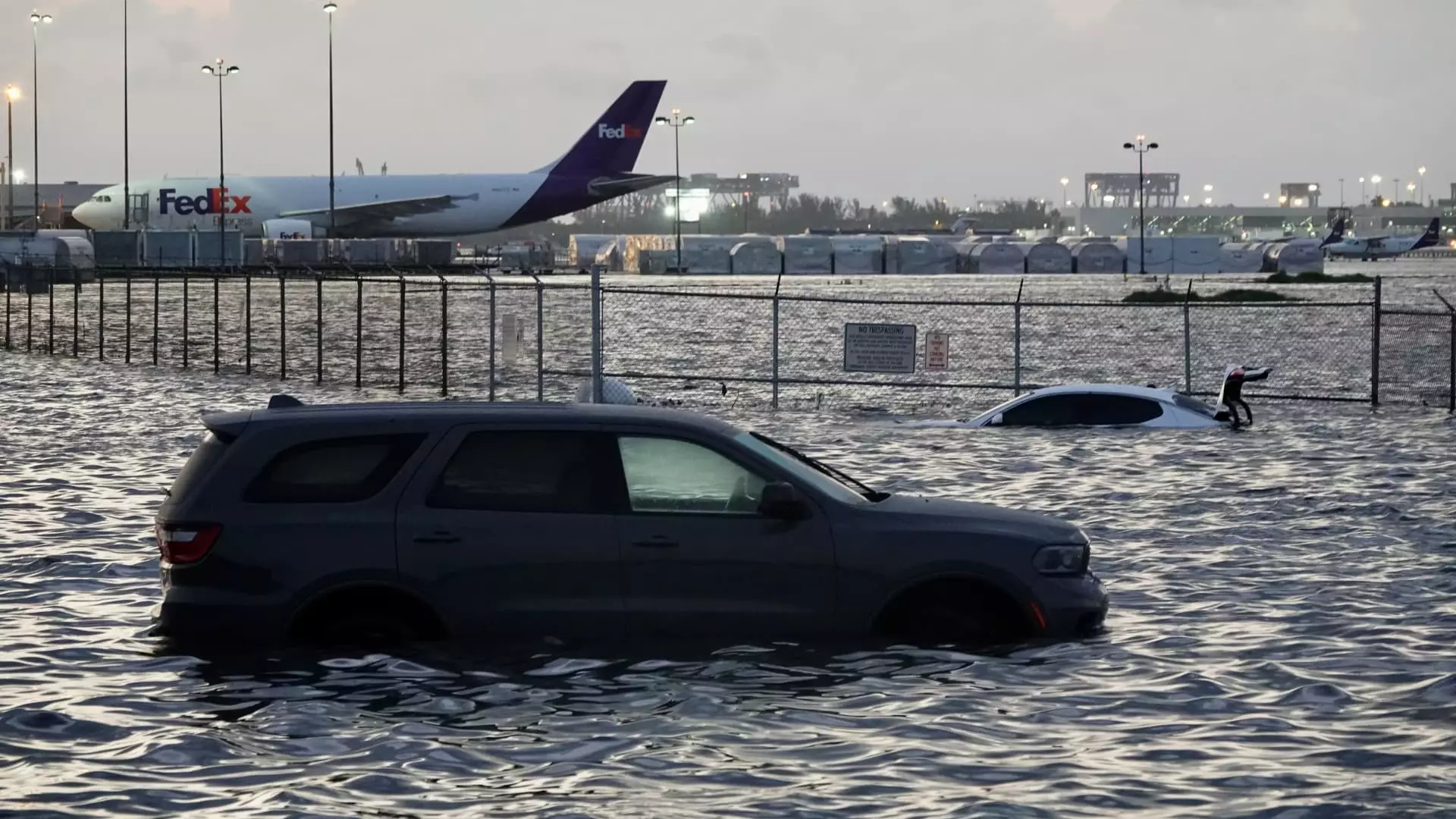The United States, often regarded as a global leader, is faltering when it comes to safeguarding its own vital infrastructure. Despite ongoing warnings from experts, the nation’s aging physical backbone remains vulnerable to the relentless march of climate change. From flooded airports to melted bridges, the signs of a crumbling system are unmistakable, yet decisive action remains elusive. This negligence is not merely an oversight but a glaring indictment of political inertia—our infrastructure is teetering on the brink of collapse, and the consequences threaten to be catastrophic.
The latest assessments from the American Society of Civil Engineers are sobering. Their grades reveal a system that is barely scraping by—an overall “C,” a reflection of decades of underinvestment, neglect, and increasingly volatile climate phenomena. It is clear that many American infrastructure components were built for a climate that no longer exists. Specific sectors like airports, power grids, and telecommunications are particularly vulnerable, facing a rising risk of failure with every extreme weather event. Are we prepared for the storms of tomorrow, or are we just blindly patching the cracks in a sinking ship?
Climate Change: The Invisible Enemy in Our Infrastructure
Most Americans are aware that climate change is a pressing existential threat, but few comprehend how intimately it is intertwined with the fragility of our infrastructure. Historic rainfall turning runways into rivers at Fort Lauderdale, heat-induced bridge failures over the Harlem River—these are not isolated incidents but a disturbing pattern that exposes infrastructural vulnerabilities. Such events underscore a grave truth: the infrastructure we rely on was not designed with the future in mind. It was built based on outdated climate assumptions, making it ill-prepared for the extreme weather that has now become routine.
Recent research by climate risk analytics firms indicates that a significant percentage of our critical infrastructure—power, telecommunications, and airports—faces imminent threats from floods, wildfires, and heatwaves. The numbers are startling. Nearly 20% of power infrastructure and 17% of telecom systems are at major risk, highlighting a systemic failure to adapt. The consequences of these vulnerabilities are far-reaching, threatening economic stability, public safety, and national resilience. Yet, instead of a robust response, the nation continues to delay meaningful investments, deepening the crisis.
The Financial and Political Toll of Inaction
Addressing climate resilience is not only an engineering challenge but a financial and political dilemma. Experts like Sarah Kapnick and Tom Smith emphasize that science forms the backbone of effective adaptation strategies. But that science has been under attack—covertly and overtly—through brutal budget cuts and political sabotage. The Trump administration’s decision to slash funding for climate science and resilience programs vividly illustrates a shortsighted approach that prioritizes ideology over national interest.
The funding gap is staggering—an estimated $3.7 trillion over the next decade is needed just to bring U.S. infrastructure into a resilient state. Yet, political decisions continue to undermine investments, as evidenced by canceled programs aimed specifically at disaster mitigation. Financial institutions are keenly aware of the risks, asking how to incorporate climate resilience into their portfolios. But without reliable data and proactive governance, these efforts are hamstrung. The nation’s political will is the missing link—the crucial element that could turn the tide or inexorably accelerate our decline.
A Call for Urgency and Action
The path forward demands more than just acknowledgment; it requires bold, immediate action. We must fundamentally rethink how we design, build, and maintain our infrastructure, integrating climate science into every stage. What’s missing is a national strategy that elevates resilience as a core priority—one that is funded and driven by politicians willing to confront the truth head-on. Failure to do so invites a future where everyday life becomes increasingly disrupted, and the cost of recovery skyrockets.
In the end, the question is whether America’s leaders will finally recognize the peril or continue to ignore it, gambling with the safety and prosperity of future generations. Our infrastructure was historically a symbol of progress; now, it is a reflection of neglect and shortsightedness. The climate crisis is not waiting for political consensus—it is demanding urgent adaptation. The question remains: will we act before it’s too late, or will we watch as our only roads, bridges, and power systems fade beneath our feet?

